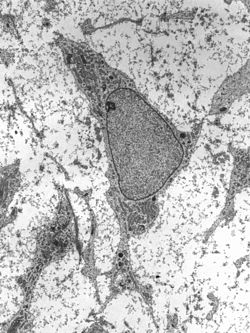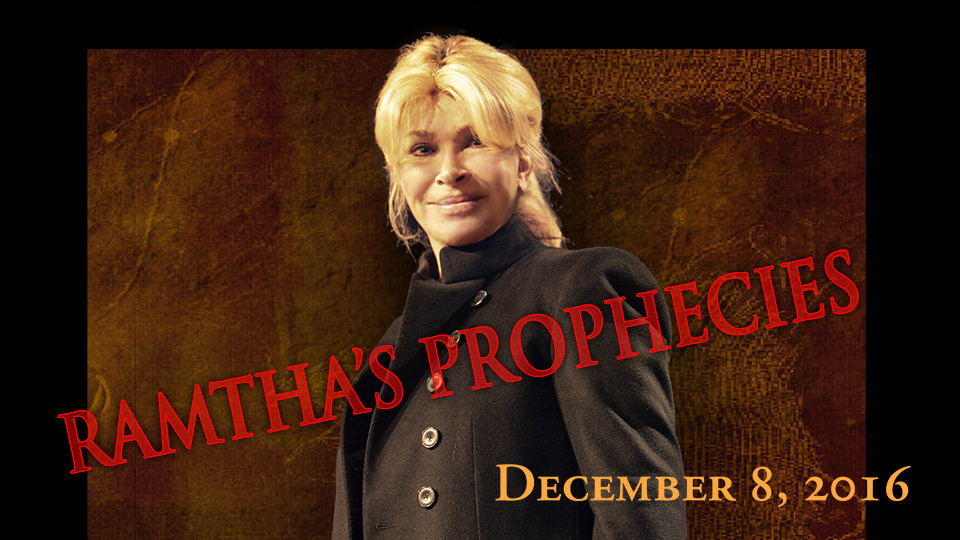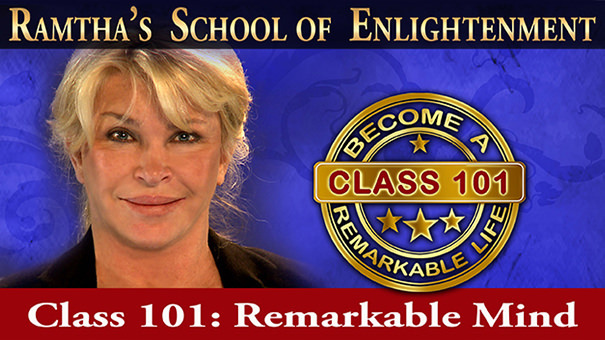Ramtha’s 1980 teaching syncs with what is now known on stem cells

“Transmission electron micrograph of an adult stem cell
displaying typical ultrastructural characteristics.” Credit: Wikipedia
RSE student and physician Dr. Karriem Ali took note that Ramtha’s 1980 Dialogue teaching describing what we now call stem cells. This was long before the current medical research towards stem cell therapy was ever presented.
– “Introduction: What are stem cells, and why are they important?”
“Stem cells have the remarkable potential to develop into many different cell types in the body during early life and growth. In addition, in many tissues they serve as a sort of internal repair system, dividing essentially without limit to replenish other cells as long as the person or animal is still alive. When a stem cell divides, each new cell has the potential either to remain a stem cell or become another type of cell with a more specialized function, such as a muscle cell, a red blood cell, or a brain cell.
Stem cells are distinguished from other cell types by two important characteristics. First, they are unspecialized cells capable of renewing themselves through cell division, sometimes after long periods of inactivity. Second, under certain physiologic or experimental conditions, they can be induced to become tissue- or organ-specific cells with special functions. In some organs, such as the gut and bone marrow, stem cells regularly divide to repair and replace worn out or damaged tissues. In other organs, however, such as the pancreas and the heart, stem cells only divide under special conditions,” quoting the National Institutes of Health (NIH).
Read more
– History of Stem Cell Research
“In 1968, the first bone marrow transplant was performed to successfully treat two siblings with severe combined immunodeficiency. Other key events in stem cell research include:20px break
1978: Stem cells were discovered in human cord blood
1981: First in vitro stem cell line developed from mice
1988: Embryonic stem cell lines created from a hamster
1995: First embryonic stem cell line derived from a primate
1997: Cloned lamb from stem cells
1997: Leukaemia origin found as haematopoietic stem cell, indicating possible proof of cancer stem cells
In 1998, Thompson, from the University of Wisconsin, isolated cells from the inner cell mass of early embryos and developed the first embryonic stem cell lines. During that exact same year, Gearhart, from Johns Hopkins University, derived germ cells from cells in foetal gonad tissue; pluripotent stem cell lines were developed from both sources. Then, in 1999 and 2000, scientists discovered that manipulating adult mouse tissues could produce different cell types. This meant that cells from bone marrow could produce nerve or liver cells and cells in the brain could also yield other cell types. These discoveries were exciting for the field of stem cell research, with the promise of greater scientific control over stem cell differentiation and proliferation,” by Ian Murnaghan, Explore Stem Cells.
Read more
– Ramtha’s 1980 teachings still pertinent today
“The image of each part of the wonderful body had been collected through the envision of creation. Each organ, each understanding, was set perfectly in thought, and light synthesis would become the perfect image in the formulation of matter. Each cell in its broken atom structure holds within it the perfect remembrance of the perfect ideal totally, yet the seed of the cell holds the reproduction of the part of the totality it will eventually express. To the minute thought was given to the minute cell and each cell’s basis is light.
If you take from your liver a scrape, take from your heart a scrape, and take from your hair a scrape, you will see the light universally. Within each cell there is light, but it emanates a different color. If you take the cells and inject them into your body, if your heart is weak the very small cell will find its way through your bloodstream to your heart. It will regenerate itself in same tissue, same alignment, same likeness, same light, and it will repair the broken heart. The liver will grow and repair the liver. Yet it is so minute you have looking glasses to see it, as the intelligence is that small.”
– Ramtha
December 1980
Excerpt from: “Creation Specialty Series Ramtha”
Click here to purchase the CD.



